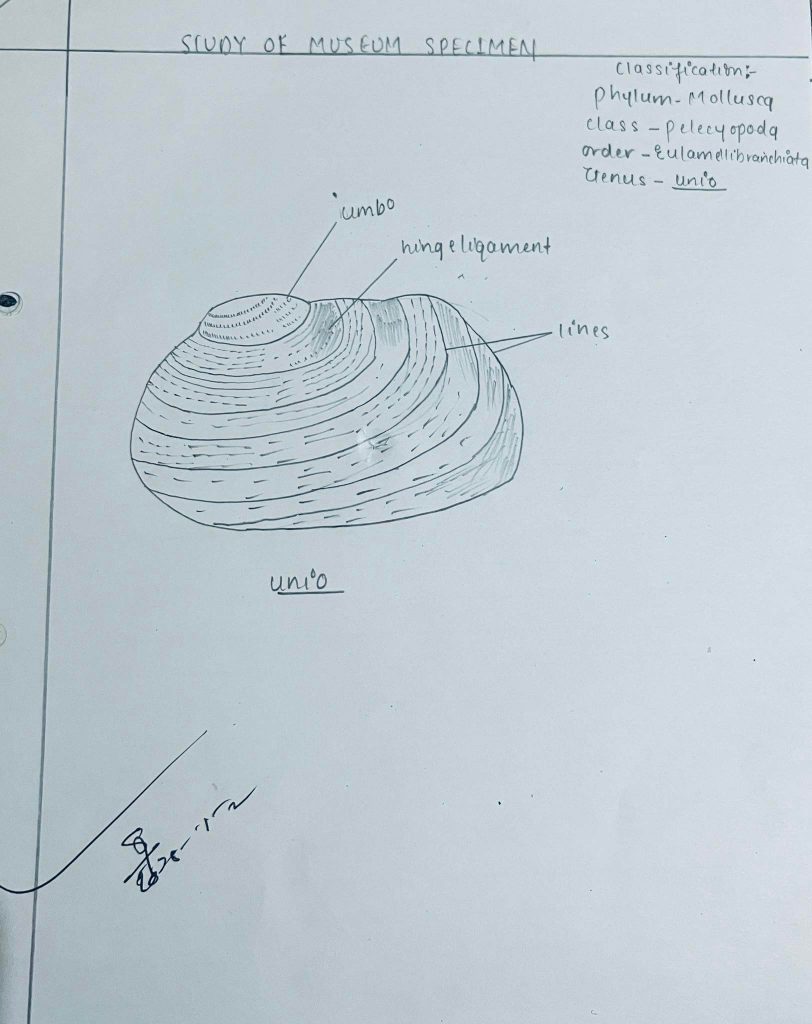Comments of Unio
Distribution :-
Unio is commonly found in India, Europe, Atlantic Slope and U.S.A.
Habit and Habitat:-
Unio is found at bottom in ponds, lakes, streams and rivers buried in the sand or mud.
General characters:-
1) Unio is commonly known as freshwater mussel.
2) Body is Soft, unsegmented bilaterally symmetrical and flattened, measuring about 5-10 cm in length and enclosed in a calcareous shell.
3) Shell consists of two separate equal pieces or values on the right and left sides of the body.
4) Foot is large, muscular and wedge-shaped used for burrowing.
5) Sexes separate but the male and female shells are alike.
6) Development includes glochidium larva.
7) Two bipectinate gills ,one on each side of the visceral mass, are present.
Economic Importance:-
It is used for dissection purposes; its shell is used to make buttons, tools, jewelry etc.

unio
